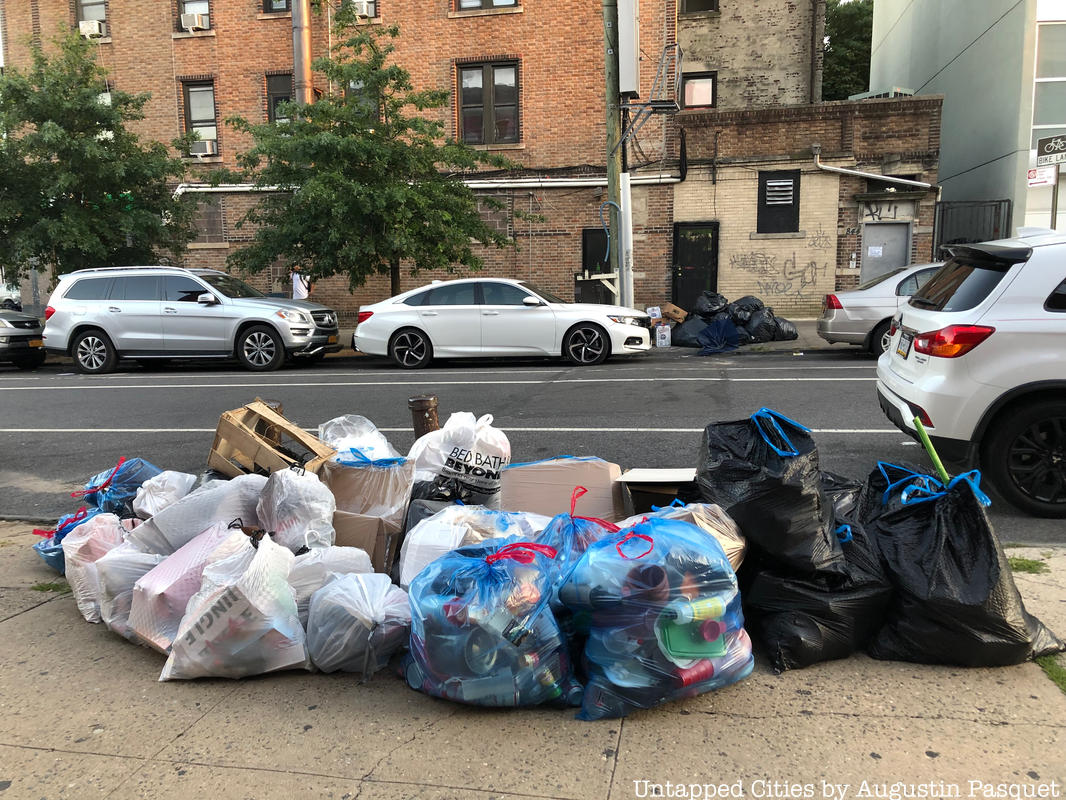
Yesterday, Open House New York concluded its year-long series, Getting to Zero exploring New York City’s waste management system. Getting to Zero: Zero Waste Guidelines revealed to its audience that the waste system in the city goes beyond sustainability, in that the way we process and deal with waste is actually a design issue. So, the Zero Waste Guidelines were developed to help New Yorkers achieve an ambitious goal to bring zero waste to landfills by 2030.
In New York, we’re used to seeing trash and recycling piled up on the side of the street the day before pick-up. The trash brought outside comes from indoor facilities that have barely enough room to hold an entire building’s worth of trash, leaving our sidewalks crowded and streets stinking up because the system has not been able to evolve from this plan initially implemented in 1989.
A groups of leading experts came together to present to New York a new way of looking at city waste- a new and safe way to dispose of it that doesn’t disturb life in guidelines developed from an initiative by the Center for Architecture.
The guidelines came out of a question posed by Clare Miflin, an architect at Kiss + Cathcart, Architects (a panelist last night): What can architects do to support organics collection in the buildings they design?
Authors of the new guidelines followed the path of New York’s waste from residential and commercial buildings to the landfills they ended up in. By learning about how exactly waste is dealt with in the city, they were able to come up with an informative plan that looks to build better designs for taking out the trash, starting at the very beginning with proper sorting and efficient pick-up.
The authors of the plan come from diverse professional backgrounds at architecture firms, City agencies, and non-profits, which tells us that waste management is not just a Sanitation Department issue. The city is in dire need of a plan like this that helps not only developers, designers, and building operators implement more sustainable waste management systems, but lets citizens actively participate in effective methods of trash removal informed by clever and meaningful design.
So what does that mean exactly that New York’s waste management system is inherently a design problem? One of the speakers remarked that people will recycle if they have a clear and easy way to do so. It is not that people don’t care about the environment and that they don’t want to recycle, it’s that there needs to be a clear-cut system readily available to people to use. Often today we’ll find three bins color coded to the kind of waste that goes into them. Yet, most of us still seem confused as to what gets thrown out where, ultimately throwing out trash in the incorrect bins.
The authors looked at particular case studies where being a zero waste certified facility is possible, looking at buildings such as the Etsy Headquarters in Brooklyn and Starrett-Leigh Building in Chelsea. Etsy for example has created waste stations designed to change the behaviors of the staff members, making them more conscious about throwing out their waste, but also creating opportunities to reduce waste with employee engagement events such as clothing swaps.
Part of implementing zero waste tactics is to get people to understand how much waste they produce individually and as a building. To help with that, Zero Waste Design has also created a Waste Calculator to figure out the volume of waste your building is producing and the measures you can take to reduce it.
It was duly noted that most buildings in New York are already built, so creating brand new spaces for optimal and ideal waste management techniques is difficult. In general, the guidelines on most all case studies provided best practice strategies that included: determining waste streams and quantities; planning routes; defining storage space; plan for collections; in the case of commercial buildings, consider staff procedures; providing clear and visual cues; design for occupancy; and reduce material waste.
We’ve seen New York change its tactics when it comes to handling waste. Freshkills Park, a former landfill, is slowly being turned into a park for public use. Battery Park City used to be a landfill, while exhibitions like The City Reliquary’s NYC Trash! Past, Present & Future explores the story behind New York City’s solid waster, examining the ways in which residents of the city are reusing and recycling.
To help facilitate more understanding of how to deal with our waste, we encourage you to read through the guideline. The plan is easy to read, full of graphics and interesting case studies to help us all get to a better understanding of how to handle waste and ultimately reach a zero waste New York City.
The evening’s lecture featured presentations by authors of the guidelines: Clare Miflin, Kiss + Cathcart, Architects; Christina Grace, Foodprint Group; and Benjamin Miller and Juliette Spertus, ClosedLoops. Afterwords, a panel discussion was held with Clare Miflin; Elizabeth Balkan, Director of Policy and Senior Advisor, Office of the Commissioner, NYC Department of Sanitation; Claudia Herasme, Chief Urban Designer / Director of Urban Design, NYC Department of City Planning; and Emily Kildow, Sustainability Manager, Taconic Management Company; moderated by Cole Rosengren, Staff Reporter, Waste Dive.
Next, check out the Trash Gallery in this NYC Sanitation Garage on the Upper East Side and read the The Top 10 Secrets of NYC’s Department of Sanitation.





